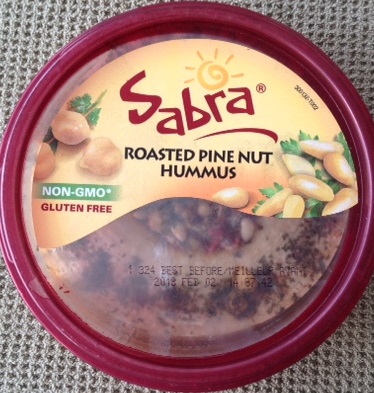My New Year’s resolution was “to be less combative as I continue to defend processed food.” To that end I bring your attention to Future Foods by David Julian McClements. Full disclosure: I have seen Julian once or twice across the room at the UMASS breakfasts at the Annual Meeting of IFT (Institute of Food Technologists). We may even have shaken each other’s hands. I am not really sure. We share the same editor at Springer, and we have exchanged emails once since his book came out. His book provides a wonderful vista of the field of food science with a more positive outlook and a less defensive perspective than my book and posts on this site. I view the book and author as a generational shift in attitude toward the world which I perceive as increasingly hostile to processed foods. Of particular interest was his evolution from skeptic to grudging admirer about the field of nutrition as he became more immersed in the topic while researching the book. So, in my typical book-review style I respond to direct quotes from the book in bold:
“It is quite remarkable that we can eat such a wide variety of foods (doughnuts, steaks, milks, apples, veggie burgers French fries . . .) and still convert them into skin, bones, teeth, muscles, nails, hair and eyes.” (p 112) What a wonderful portrait of what food science is all about. I wish that I could write like that! Most of us know we eat food and know that we change anatomically and physically, but few of us think how we turn that food into flesh and bone. I still find it incredible that the branches on the tree in my back yard comes by fixing carbon dioxide from the air. There is so much that goes on in everyday life that we don’t think about and take for granted. These events are possible through sophisticated biochemistry that is going on in our bodies or those of other living organisms.

“The food industry is reformulating many of its products or developing entirely new products to make them healthier and more sustainable.” (p 61) These are the two areas that food activists and consumers want food scientists to focus on. McClements and I both feel strongly that food science can’t achieve these goals without designing ultra-processed foods. As I have indicated in an earlier post, it’s the formulation (mixing of ingredients) rather than the processing that makes a food ultra-processed. Food waste is the challenge to sustainability; composting is not enough. The author describes why he has become a vegetarian and would become a vegan if there were more high-quality, ultra-processed, plant-based products were available. He also points to packaging of food products as problems that industry must face and fix. Such positions are partly why I see the book as revealing an intergenerational split. I am nowhere near giving up meat, but I respect his perspective. At least one of my elders is not willing to forgo plastics.

“By increasing food production, we can feed more people causing the global population to grow, meaning we need even more food—and so the cycle continues. Controlling population growth is just as critical for ensuring a sustainable planet as producing more food.” (p 32) Technological advances are a double-edged sword. Agricultural technology has provided tools to allow us to grow food where it has not grown before, thus decreasing the percentage of world population who do not have enough to eat. Such technology has also made it possible for more people to live and many of these additional people live at the margins while others of us consume more than our fair share of food and natural resources. Society has not been very successful at finding a balance between population growth and technological advances.
It appears to me that there is a general failure to appreciate the constraints brought about by increased population and demand for food. Technology can provide solutions to existential threats, but it can also contribute to population growth. For example, food scientists are working on designing food products that are affordable, nutritious and made from local ingredients to meet the needs of nursing mothers and their infants. It is in these impoverished areas of the world that are most likely to see the greatest increases in population between now and 2050.
“Many people think that all artificial additives should be removed from food, as this would improve our health, but this is not usually the case. If we stop using artificial preservatives, our foods are more likely to spoil, leading to more food waste and environmental damage, as well as to less safe, leading to more illness and death.” (p49) Additives are the rub—advocacy for incorporating them into food products is what separates the food scientist from a normal person. It is also what separates a food from an ultra-processed food. There is a growing fear of chemicals—the public only sees the bad and not the good to the point that almost 40% of Europeans want to live in a chemical-free world. Preservatives are chemicals that keep whole foods from rotting. Rotting is not a good thing. It contributes to food waste and decreases sustainability. BTW, chemicals like oxygen, water, protein, vitamins, minerals and caffeine are important for life.

“A healthy meal must be carefully designed so that it looks good, makes you feel satisfied, and does not encourage overeating.” (p 63) Today’s world is complex, and we ask much of designers of new foods. Healthy, low calorie products can be developed but if they don’t sell or are eaten, then they are not improving health. We want food that is attractive and flavorful, but it must not have too many calories and must not be so appealing that we overeat it. It is easy to condemn certain processed foods, but do we hold home foods and the cooks who prepare them to the same standards? What about baked sweets from a store? It’s easy to blame Big Food or advertising or other people who encourage us to overeat, but we also need to take some personal responsibility. Having said that, fat shaming has no place in our society. We need to accept responsibility for ourselves not point fingers at others.
“Food scientists are therefore trying to replace sugars and starches with healthier ingredients, without affecting food palatability and desirability. My own research group has constructed artificial starch granules from natural proteins and dietary fibers, which can thicken solutions and “melt in the mouth” like real starch granules.” (p 43) Again the emphasis is on palatability without overeating. Research is being conducted on achieving satiety, but that can be tricky as one reason that some people overeat is because they don’t respond as easily to a feeling of fullness (1). The other point McClements makes is that artificial doesn’t necessarily mean bad or as David Rakoff put it in Fraud
There is almost no more urban view than this pastoral, idyllic one: Humankind bad, Nature good. As in drinking and fighting bad, elves and flowers good. But it is a false dichotomy. After all, following this logic, Sistine Chapel bad, Ebola virus good?
Now I understand the need to replace sugars in foods as the author is pursuing in his lab, but I am not so sure about the value of replacing starches unless the replacement results in fewer calories. That is an example of why the quest for healthy foods is so challenging. Note, contrary to many food writers, McClements believes in the importance of calories.
Bottom line: Julian McClements has written a wonderful book that would make a great gift for any aspiring young person interested in science, particularly if they are also interested in food. It is probably too technical for someone who has little interest in science and it drifts too far afield to make it useful as an introductory textbook. Future Foods is well written with excellent illustrations throughout the book to enhance the message. It is also filled with many examples of how a better appreciation of the science behind a food process or product can improve our quest to eat healthier. In this review I have emphasized places where the two of us agree. There are topics on which we don’t agree, but I feel comfortable in passing explanations of the science behind the food we eat to a younger generation of food scientists.
(1) Hellström, P.M., 2013. Satiety signals and obesity. Current Opinion in Gastroenterology 29:222-227.
Next week: Generational perspectives on nutrition and food science


Thanks for the comment. It is definitely a book you would like.
LikeLike
Sounds like an interesting read, especially with the paradox you mentioned between anti-food waste and anti-additives. Thanks for reviewing the book.
LikeLike